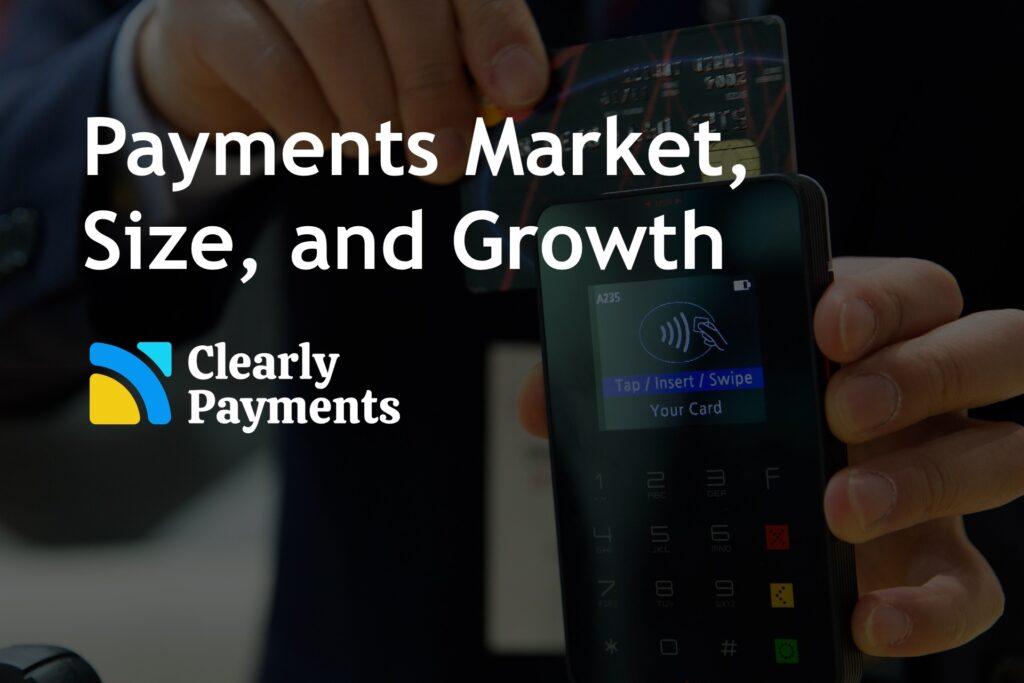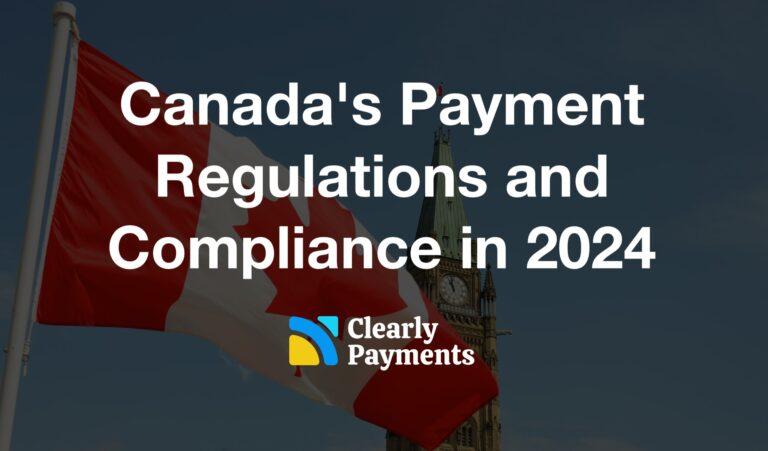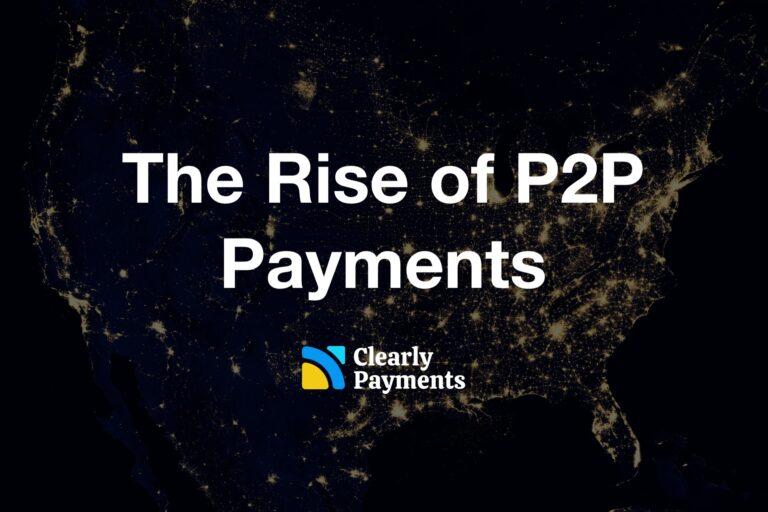You cannot talk about payments without talking about digital payments. Cash and checks are declining in use while digital payment forms are skyrocketing. The number of checks being written is dropping by 1.8 billion a year, and at that rate, checks would go away entirely by 2026. Checks may stay a little longer than that, but they will become very niche. Therefore, this article focuses more on digital payments.
There are many reasons why digital payments are becoming more popular. For businesses, digital payments can help to reduce costs associated with processing traditional methods of payment. Even though credit cards have a fee for merchants, the extra cost and risk of dealing with physical cash and checks makes physical payments more expensive. Digital payments are also more secure than traditional methods, which can help to prevent fraud and other crimes.
The payment processing market is a rapidly growing industry that includes companies that facilitate transactions between businesses and consumers. These transactions can include credit and debit card payments, online payments, and digital wallet transactions. Some of the major players in the market include companies like Visa, Mastercard, and PayPal.
Key drivers in the payments market
The payments market is driven primarily by the increasing adoption of digital payment methods and the growth of online payments. The increasing popularity of smartphones and mobile devices has also helped to drive the market, as these devices make it easy for consumers to make payments on the go. Additionally, the increasing use of contactless payments due to the COVID-19 pandemic has also contributed to the growth of the market.
The growth of e-commerce and online businesses has led to an increase in demand for online and mobile payment methods, and is driving the development of new technologies such as digital wallets and mobile payments.
New technologies such as blockchain and biometrics are also expected to have a significant impact on the market in the coming years. Blockchain is expected to bring increased security and transparency to payments, while biometrics such as facial recognition and fingerprint scanning are expected to make payments more convenient and secure.
The market is also witnessing the emergence of new players, including fintech firms and technology companies, which are challenging the traditional payment processing companies.
Governments and regulatory bodies are playing an increasingly important role in shaping the payments market through the introduction of new regulations and standards. For example, the introduction of the European Payment Services Directive (PSD2) is driving the development of open banking and is encouraging the creation of new payment services and technologies.
Overview of the types of digital payment
Digital payments refer to the use of electronic means to make financial transactions, as opposed to using cash or checks. The most common forms of digital payments include:
Credit/debit card payments: This is the most widely accepted form of digital payment, and it allows customers to make payments using their credit or debit cards.
E-wallets: E-wallets are digital wallets that can store a customer’s credit or debit card information, allowing them to make payments quickly and easily without having to enter their card information each time. Examples include PayPal, Venmo, and Apple Pay.
Bank transfers: Bank transfers allow customers to transfer money between bank accounts using services like Zelle or Interac e-Transfer.
Mobile payments: Mobile payments allow customers to make payments using their smartphones. Examples include Google Wallet and Samsung Pay.
Direct debit payments: Direct debit payments are a way for merchants to automatically collect payments from customers’ bank accounts on a regular basis. This is commonly used for subscription services.
ACH and EFT payments: Automated Clearing House (ACH) payments allow customers to make electronic payments directly from their bank account, it’s commonly used for bill payments and other recurring payments.
Cryptocurrency payments (such as Bitcoin and Ethereum) allow people to transfer tokens among each other in seconds at a very low cost. Cryptocurrency is an emerging technology that is growing quickly with people and institutions alike.
These are all types of digital payments that are growing at the expense of using cash and checks. All numbers are pointing towards digital payment forms being the future of finance. As mobile devices and technology overall becomes cheaper and more commoditized, everyone on Earth will have access to digital payments removing the need for any physical forms of payments.
Payments market size and growth
The payment processing market is a large and rapidly growing industry. The global payment processing market size was valued at USD 3.13 trillion in 2020 and is expected to expand at a compound annual growth rate (CAGR) of 8.3% from 2021 to 2028.
The payment processing market in North America is a significant portion of the global market. The North American payment processing market size was valued at USD 1.02 trillion in 2020 and is expected to expand at a compound annual growth rate (CAGR) of 7.8% from 2021 to 2028.
The majority of the payment processing market revolves around processing credit card transactions. In North America, there are close to 400 million credit cards in circulation and the average balance on each credit card is $8000 in USA and $4000 in Canada. There has been a 58% increase in the number of credit cards in the world from 2015 to 2021.
Payments market statistics
Here are some statistics that can give an idea of the size and growth of the payment processing market. It is important to keep in mind that each firm tracks statistics in their own way. Therefore, you may find some conflicting numbers. For example, one firm that measures the online payment processing market may include only the revenue from payment gateways. However, another firm may include the revenue from payment gateways, ecommerce platforms, and online payment software developers.
According to a report by the research firm Mordor Intelligence, the global payment processing market was valued at $7.4 billion in 2019 and is expected to reach $12.4 billion by 2025, growing at a CAGR of 8.5% during the forecast period.
A report by MarketsandMarkets estimated that the global online payment market will reach $9,935 billion by 2025, growing at a CAGR of 19.3% from 2020 to 2025.
According to a report by the research firm Zion Market Research, the global mobile payment market was valued at $1.2 trillion in 2019 and is expected to reach $3.3 trillion by 2026, growing at a CAGR of 15.1% during the forecast period.
A report by ResearchAndMarkets estimated that the global payment gateway market will reach $16.5 billion by 2026, growing at a CAGR of 14.1% from 2020 to 2026.
According to a report by the research firm Technavio, the global payment security market is expected to grow by $16.4 billion during 2020-2024, progressing at a CAGR of over 10% during the forecast period.
A report by the research firm MarketsandMarkets estimated that the global point of sale (POS) terminal market will reach $80.7 billion by 2027, growing at a CAGR of 10.1% from 2020 to 2027.
According to a report by the research firm ReportLinker, the global mobile point of sale (mPOS) market was valued at $19.7 billion in 2019 and is expected to reach $40.6 billion by 2025, growing at a CAGR of 12.3% during the forecast period.
These are just a few examples, but there are many other statistics that can be used to measure the payment processing market and its growth.




